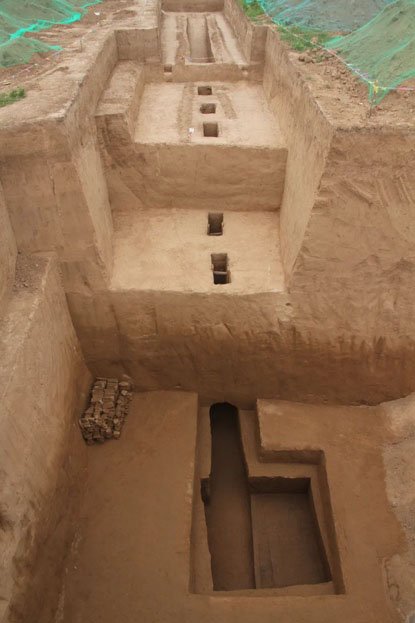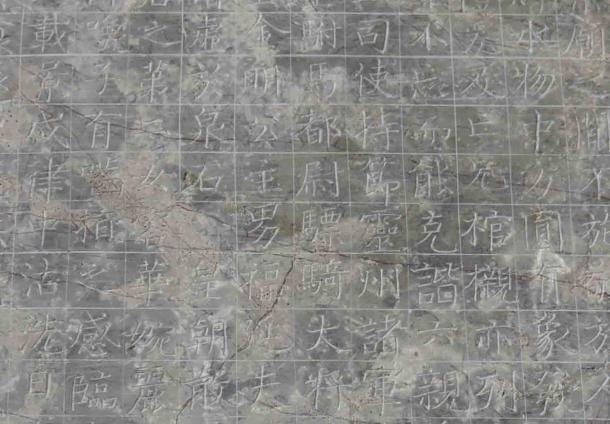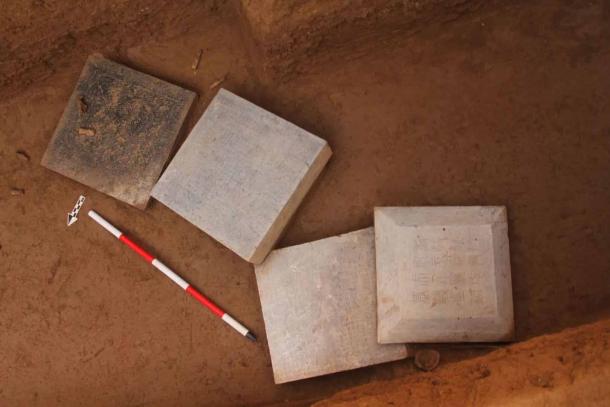Following the Sui dynasty, the Tang dynasty, or Tang Empire, was an imperial dynasty that ruled China from 618 to 907 AD, and was followed by the Five Dynasties and Ten Kingdoms period. Now, archeologists in China have announced the rare discovery of works from an “iconic calligraphy master of the Tang Dynasty” in a hitherto unexplored tomb unearthed in the Xixian New Area.
According to an article in China Daily , the calligraphy was written by Yan Zhenqing, a military general, politician and the chief calligrapher and a loyal governor of the Tang Dynasty. This was all derived from the ancient inscriptions that were discovered on a stone stele in the shadows of the time world death chamber. Measuring 35.8 meters (117.45 ft.) long by 9.5 meters (31.16 ft.) deep, over 100 other relics were discovered in the tombs including coins, jars and figurines, but the ancient calligraphy shadowed all other finds.

The iconic calligraphy by Yan Zhenqing was found on a tombstone within the ancient tomb of Yuan Daqian and his wife Luo Wanshun in China’s Shaanxi Province. ( Xinhua)
The Noble Woman with a Private Calligrapher
The epitaph inscribed with Yan’s calligraphy belongs to a noble woman named Luo Wanshun who died in 746 AD, according to the epitaph. She was the wife of Yuan Daqian, a 7th-generation grandson of a prince of the Northern Wei Dynasty (386-534) and a military commander. A report for Archeology News Network quotes Xu Weihong, a researcher with the Shaanxi Provincial Institute of Archaeology , as saying that since June “over 100 tombs” have been discovered from both the Han (202 BC to 220 AD) and Tang dynasties . All of these discoveries have been made in an area reserved for the upcoming construction of government buildings.

The epitaph written in the distinctive calligraphy of Yan Zhenqing, a famous Tang master calligrapher, has been discovered in an ancient tomb in China. Source: Li Yangbo / Wenhui
According to Xu Weihong, the ancient writing is consistent with the timeline of Yan’s life as it has been recorded in historic archives. The discovery of these priceless artifacts, dating from the dawn of creative writing in the east, means researchers will now gain a much more intimate understanding of this calligraphy master and his work. Putting the calligraphy into historical context, Xu refers to historical recordings that demonstrate how Yan became a local official of ancient Xi’an and was put in charge of public security in 746 AD. The researcher goes on to explain that the fact Yan was invited to decorate the tomb with the carved epitaph demonstrates the woman’s high social status.

These are the tombstones which have been excavated from the ancient tomb and which bear the calligraphy of Yan Zhenqing. ( Xinhua)
A Talented, “Loyal and Brave” Ancient Calligrapher
Historians know Yan was a dynamic politician and skilled military general renowned for his unflagging loyalty and bravery during the social upheaval of the Shi Rebellion, which took place from 755 to 763 AD.
Yan inspired people to fight against the rebels and he later became a minister-level official, but was killed soon after receiving this accolade during another rebellion after refusing to surrender. It was in the aftermath of these turbulent times that the mighty Tang Dynasty would lose its widespread power and ultimately collapse.
Chen Genyuan, a researcher with the Xi’an Beilin Museum, has said that as far as Chinese calligraphy is concerned, Yan was “the top master following Wang Xizhi,” referring to the 4th-century artistic genius of which no works are known. What’s more, Xu concluded that the discovery of the calligraphy also “enriches our knowledge of nobles’ graves around Chang’an and provides new information on the Tang royals’ literary work.” An example of this is that the epitaphs show Yuan’s family had close connections with royals, and that one family member was an in-law of Li Longji-Emperor Xuanzong of the Tang Dynasty.
Genyuan added that Yan’s newly unearthed works depict an “elegance that will provide a crucial reference to see his evolving calligraphic styles.” Researchers will now be able to figure out “how” his arts reached their peak during the later years of his life, when it became famed for its “grand aura and strength.”
Top image: Chinese calligraphy set. Credit: Elena Ray / Adobe Stock
By Ashley Cowie
 RSS Feed
RSS Feed















 December 7th, 2020
December 7th, 2020  Awake Goy
Awake Goy  Posted in
Posted in  Tags:
Tags: 













